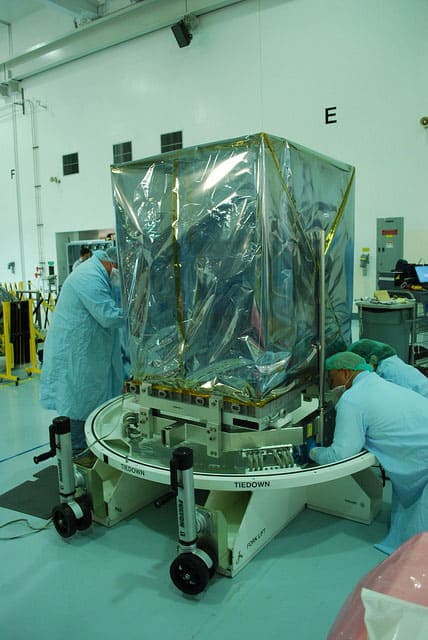Flash Physics is our daily pick of the latest need-to-know developments from the global physics community selected by Physics World‘s team of editors and reporters

Did supernova kick cause LIGO black-hole spin misalignment?
A huge kick from a supernova could have knocked the spin of one of the black holes that created GW151226 out of alignment – according to calculations done by Richard O’Shaughnessy, Daniel Wysocki of the Rochester Institute of Technology and Davide Gerosa of Caltech. GW151226 is a gravitational wave signal from two merging black holes that was detected in December 2015 by the LIGO observatory. Astronomers believe that two black holes weighing in at 14 and 8 solar masses merged to form a single, spinning 21-solar-mass black hole, some 1.4 billion light-years away from Earth. Careful analysis of the signal from the merger suggest that the spin of the larger black hole may not have been aligned with the orbital angular momentum of the binary – which could provide important information about how the system formed.
One possibility is that the two black holes formed independently and then joined together with their spins misaligned with respect to orbital angular momentum. The other possibility is that the pair started out as a binary star with aligned spins, but then one of the spins became misaligned by “natal kicks” delivered when the stars exploded as supernovae. O’Shaughnessy, Wysocki and Gerosa looked at the second possibility and conclude that misalignment could have occurred when the larger of the two stars in the binary exploded. Writing in a preprint on arXiv (which will be published in Physical Review Letters), the team cautions that the misalignment would require a “natal kick” that is much larger than predicted by current supernova theory. O’Shaughnessy adds: “That’s an exciting challenge for models of how massive stars explode and collapse”. Gerosa says: “Our study corroborates years of tentative but suggestive evidence that black holes might have received these kicks.
NASA launches neutron-star probe

NASA has launched the first-ever mission devoted to studying neutron stars. Launched on a SpaceX Falcon 9 rocket on 3 June from the Kennedy Space Center, the Neutron star Interior Composition Explorer (NICER) will use 56 telescopes to observe X-rays in the range of 0.2–12 keV that have been generated by the stars’ strong magnetic fields.
The probe will be installed on the International Space Station where it will operate for 18 months. NICER will also demonstrate – for the first time – the possibility of using pulsars as a “celestial clock” to test the viability of autonomous X-ray navigation. The launch of the craft comes 50 years after the British astrophysicist Jocelyn Bell Burnell discovered rapidly spinning neutron stars, known as pulsars.
Award-winning planetary scientists announced

Six scientists have been honoured for their contributions to planetary research and communication by the Division for Planetary Sciences (DPS) of the American Astronomical Society (AAS). The awards will be presented at the 49th Annual Meeting of the DPS in October. “Announcing these prizes is the highlight of the spring planetary sciences calendar,” says DPS Chair Lucy McFadden. Margaret Kivelson of the University of California, Los Angeles will be given the Gerard P Kuiper Prize for outstanding contributions to planetary science. Her work on Jupiter and its moons has led scientists to recognize that ocean worlds in the outer solar system may represent our best chances for discovering life beyond Earth.
The Harold C Urey Prize for an early-career scientist will go to Bethany Ehlmann from the California Institute of Technology, for her work studying the mineralogy of Mars. Louise Prockter from the Lunar and Planetary Institute (LPI) in Houston, Texas will receive the Harold Masursky Award, which recognizes outstanding service. Prockter is the first female director of the LPI and has served on National Research Council boards and NASA committees. Megan Schwamb of the Gemini Observatory and Henry Throop from the Planetary Science Institute will each be awarded the Carl Sagan Medal for their public communication efforts. Among their contributions, Schwamb created the Astrotweeps project, whereby different astronomers take control of a Twitter account each week, while Throop presents to students and teachers all over the world. The Jonathan Eberhart Planetary Sciences Journalism Award, which recognizes distinguished popular writing, will go to Joshua Sokol from Boston for his August 2016 article in New Scientist entitled “Hidden depths”.



